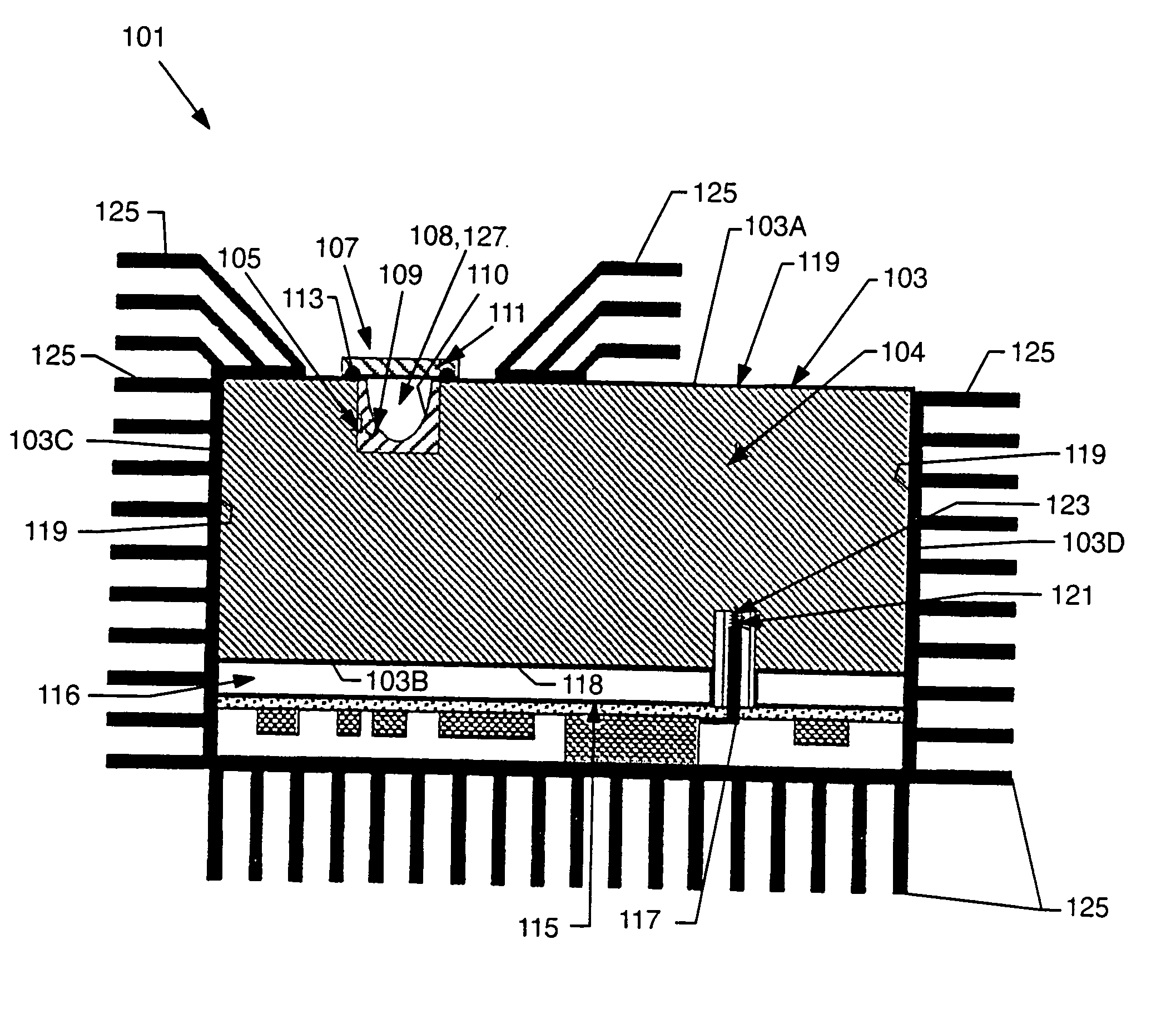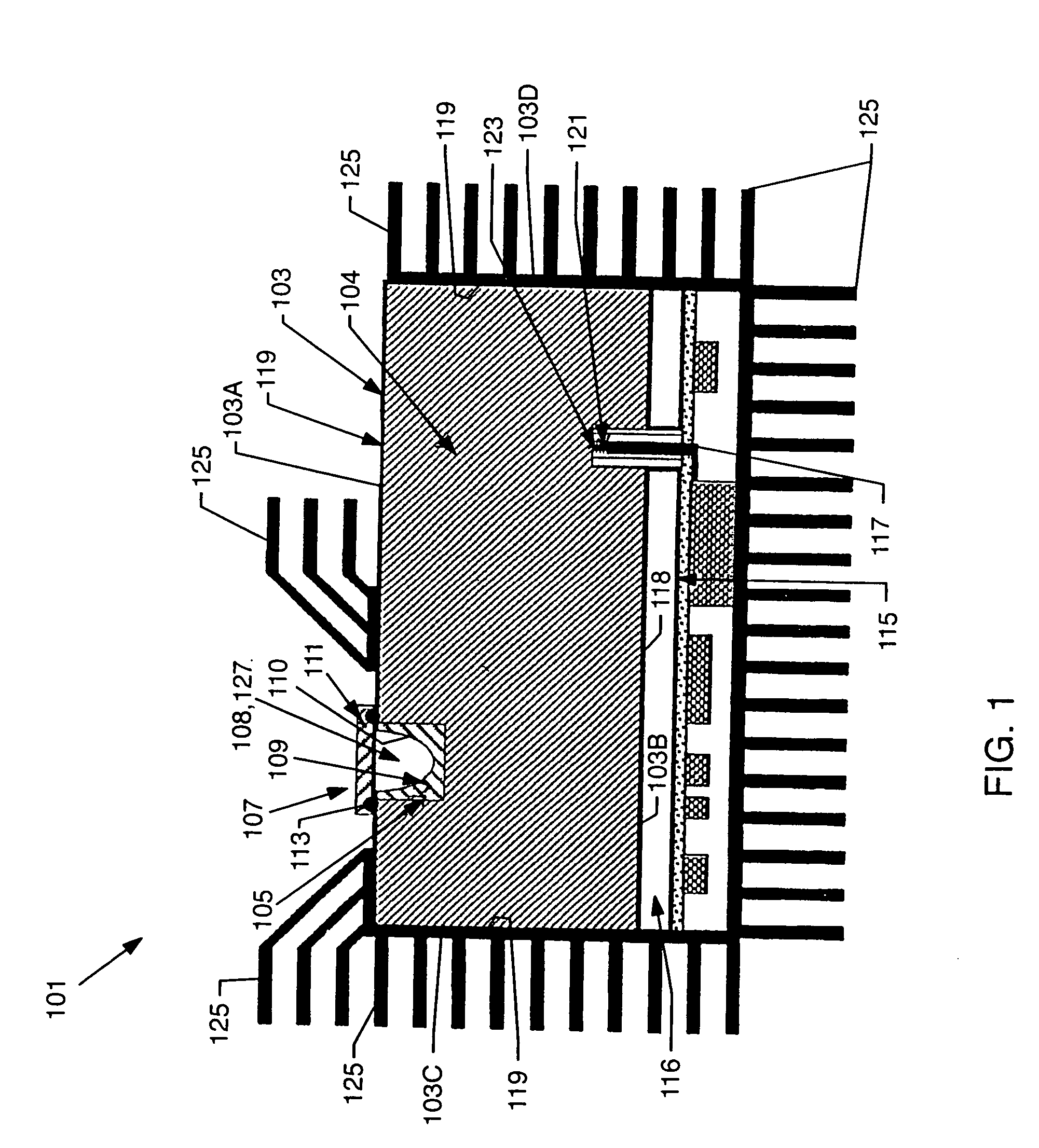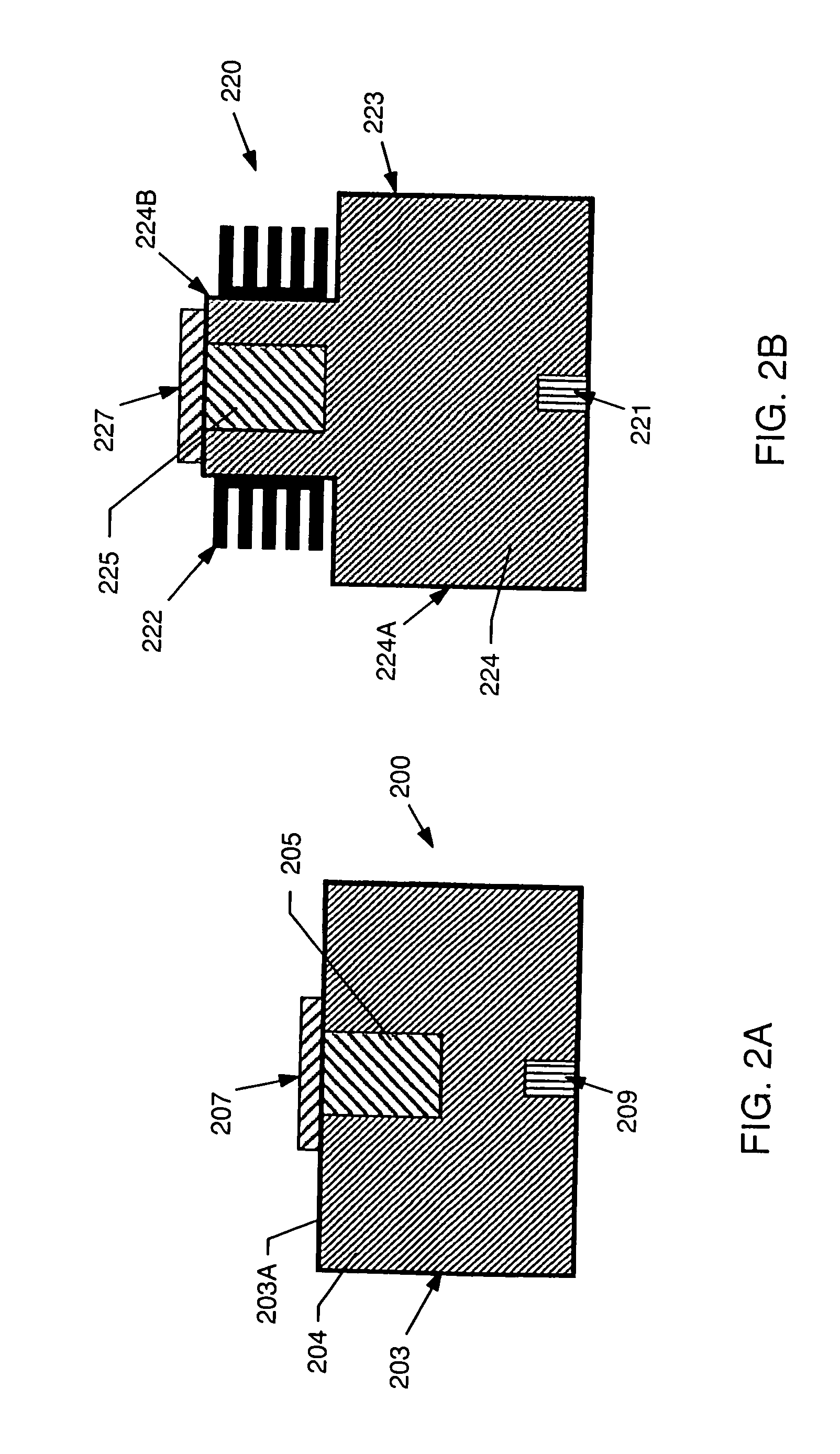Plasma lamp with dielectric waveguide
a dielectric waveguide and plasma lamp technology, applied in waveguides, structural circuit elements, sustainable buildings, etc., can solve the problems of less expensive, more reliable, and longer useful life of electrodehydeless plasma lamps, and achieve the effects of reducing the overall lamp size, and reducing the cost of production
- Summary
- Abstract
- Description
- Claims
- Application Information
AI Technical Summary
Benefits of technology
Problems solved by technology
Method used
Image
Examples
Embodiment Construction
[0023] Turning now to the drawings, FIG. 1 illustrates a preferred embodiment of a dielectric waveguide integrated plasma lamp (DWIPL) 101. DWIPL 101 includes a source 115 of microwave radiation, a waveguide 103 having a body 104 formed of a solid dielectric material, and a microwave probe 117 coupling the radiation source 115 to the waveguide 103. Waveguide103 is determined by opposed sides 103A, 103B, and opposed sides 103C, 103D generally transverse to sides 103A, 103B. As used herein, the term “waveguide” generally refers to any device having a characteristic and purpose of at least partially confining electromagnetic energy. As used herein, the term “dielectric waveguide” refers to a waveguide having a body consisting essentially of at least one dielectric material having a dielectric constant greater than approximately 2. As used herein, the term “probe” is synonymous with “feed” in the '718 application. DWIPL 101 further includes a bulb 107, disposed proximate to side 103A an...
PUM
 Login to View More
Login to View More Abstract
Description
Claims
Application Information
 Login to View More
Login to View More - R&D
- Intellectual Property
- Life Sciences
- Materials
- Tech Scout
- Unparalleled Data Quality
- Higher Quality Content
- 60% Fewer Hallucinations
Browse by: Latest US Patents, China's latest patents, Technical Efficacy Thesaurus, Application Domain, Technology Topic, Popular Technical Reports.
© 2025 PatSnap. All rights reserved.Legal|Privacy policy|Modern Slavery Act Transparency Statement|Sitemap|About US| Contact US: help@patsnap.com



